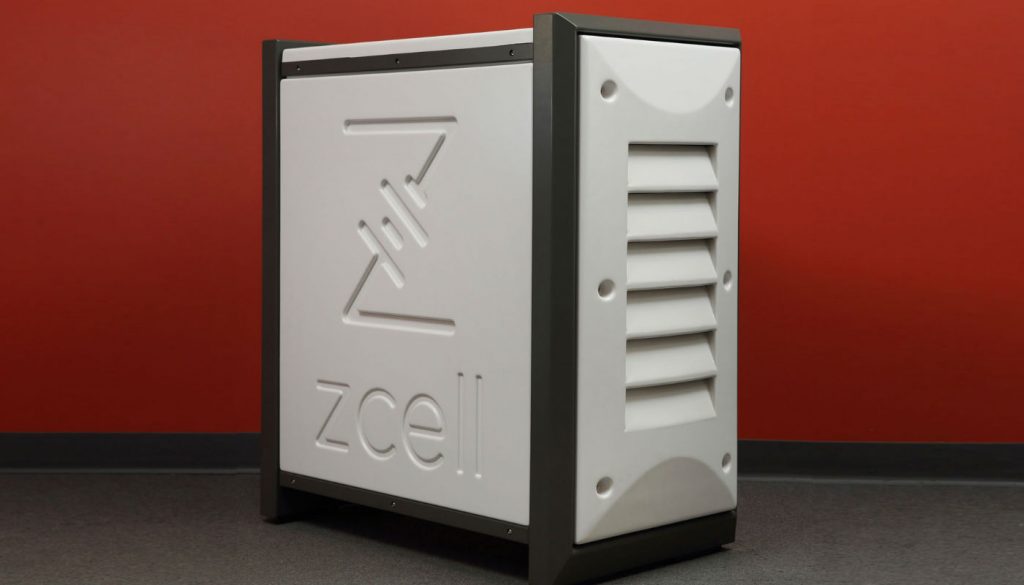Energy storage technologies are a hot topic, but we need to address cost effectiveness and safety.
The Clean Energy Council says energy storage technologies are a game changer in the energy market in Australia, helping to smooth out the peaks and troughs of intermittent renewables such as wind and solar.
A new battery storage system called ZCell by Redflow has been designed for stationary energy storage in residential, commercial and grid-scale applications. It includes two storage tanks filled with different zinc bromide-based electrolytes and weighs about 240 kg.
“The zinc bromide electrolyte is pumped past two electrode surfaces that are separated by a microporous barrier. During the charging phase, the anode converts zinc ions in the solution to zinc metal, which forms a coating on the electrode, while the cation converts bromide ions to bromine,” said Redflow CEO and Executive ChairmanSimon Hackett.
The first ZCell system was installed at an off-grid property near Willunga in South Australia, owned by the family of Alan Noble, Engineering Director for Google Australia and NZ.
Mains power was available in only one corner of the hilly 100-hectare Willunga property. Extending mains power further would have been expensive, so Noble installed two ZCell batteries, which can store 20 kWh of energy, powered by solar panels on the roof of a large shed.
“If there is a bushfire here, we can power our pumps properly, whereas electricity distributor SA Power Networks has a policy of actually shedding power during high bushfire risk days, so precisely when you need the power, they shut it down,” Noble said.
“Without the ZCells, we’d be running around trying to fire up generators during hot days, which is not practical.”
Modelling by the Clean Energy Council in its Energy Storage in Australia report indicated the potential for a 3000 MW market for energy storage devices by 2030.
“The battery market has started to expand massively, so there’s enough space in that market for a wide range of energy storage solutions to meet diverse customer needs,” Hackett said.
But one key challenge is how to deploy energy storage so that intermittent energy sources, such as solar and wind power, can be used 24/7.
“This will effectively replace the need for fossil fuel-based energy generators that currently supply baseload power. It is a huge, long-term project that has the potential to deliver enormous benefits for Australia in terms of meeting its carbon reduction goals, both today and in the future,” Hackett said.
“As consumer demand and production volumes grow, manufacturing and distribution efficiencies will drive down costs to make these new batteries more affordable.”



